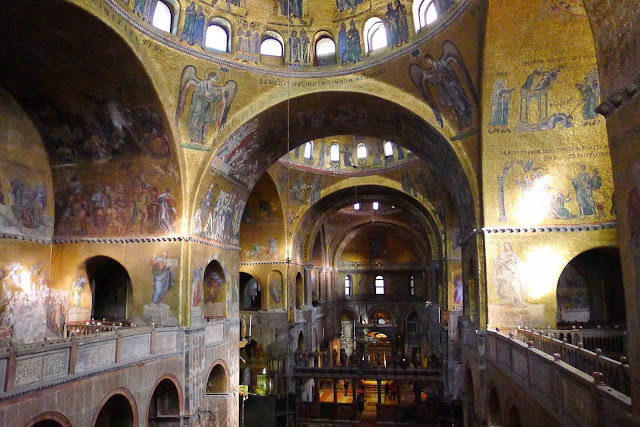The Art of Spanish Bullfighting at the Famous Maestranza
A few things come to mind to be as innately and inherently Spanish, as Bullfighting. Also known as corrida de toros (running of the bulls), the blood sport is an icon of Spain. And there's nothing quite like this deadly struggle between man and beast to conjure up the passion and bravado of Spaniards everywhere.
* At the center of the bullfighting world is this massive stadium of the Plaza de Toros de la Real Maestranza de Caballeria de Sevilla (whew, what a mouthful), more affectionately referred to as the "Maestranza".
* With a seating capacity of 12,000 spectators, the stadium is one of Seville's top attractions with locals selling-out shows pretty quickly; leaving us travelers to compete, bull-fighting style, for the remaining seats.
* As crowds go, Sevilla would have what one would call.. the hardcore crowd: passionate, knowledgeable, loyal, not easily impressed, hard to please. Think: Madison Square Garden for basketball and professional wrestling or MGM Grand for the UFC and boxing.
* Which means that all matadors (bullfighters) always bring their A-game; because if you can make it here, you can make it everywhere!
* Bullfighting is so historically and culturally intertwined with Spain that it has actually become one of its greatest exports.
* With the sport reaching the former Spanish colonies of Mexico, Colombia, Peru, Venezuela and Ecuador; as well as Spain's neighbors, Portugal and France.
* Gladiators, ready position!
* Hearing the pretend-crowd roar!
* The wife soaking up the atmosphere and history of the place.
* Dad having his moment of glory!
* What a shot! No bad angles with this view.
* Amazingly, the bullring is almost 300 years old! Construction started in 1749.
* That's a lot of dead bulls and bullfighters through the centuries.
* The ghosts of which, for sure, linger on these heavy surroundings.
* Only the fanciest of costumes for such brave men!
* What charming home decor to scare the children with!
* Ticket admission to the bullring also grants one entry to its museum dedicated to the sport.
* Activists have tried for quite some time to get the sport banned for animal warfare purposes.
* But this is not limited to contemporary times, as this call for banning has existed for centuries.
* In fact, Pope Pius V called for a ban on the sport back in the 16h Century (?!?) on the grounds of the practice being a form of pagan worship; going so far as to threaten excommunication for spectators.
* The Spaniards and Portuguese just laughed at this proclamation and continued on with their tradition. The next Pope softened his stance on this ruling. No one was excommunicated. Bullfighting continues on to this day.
* Bullfighting season runs from March to October of every year.
* A traditional bullfighting event features three matadores, each fighting two bulls.
* And these are no ordinary bulls! By Spanish law, each bull is at least 4 years old (by definition, having lived a full carefree life in an open range), weighing 600 kilos / 1,300 pounds, and is of the Spanish Fighting Bull species.
* The Spanish Fighting Bull is characterized by its power, aggression, and energy and is bred specifically for bullfighting. Ole! Ole-Ole-Ole!!!
* Located nearby is another of Seville's landmarks, the Torre del Oro (or Tower of Gold).
* And the Tower was built by the city's former Muslim rulers to control access along the Guadalquivir River.
* It is also conveniently the location of several river ports for cruising along the Guadalquivir River.
* Highlighting the importance of waterways on the growth of human civilization, one will note that every major historical city grew along the banks of a river, or shores of a sea.
* Have a river cruise, will take a refreshing short nap! These are a few of the photos I managed to take while drifting between the lands of sleep and wakefulness.
* Is that a mascot holding up a cerveza bottle while balancing on a tight rope?!
* One can never get tired of the fantastic Spanish cuisine.
* Magnifico!









































Comments
Post a Comment